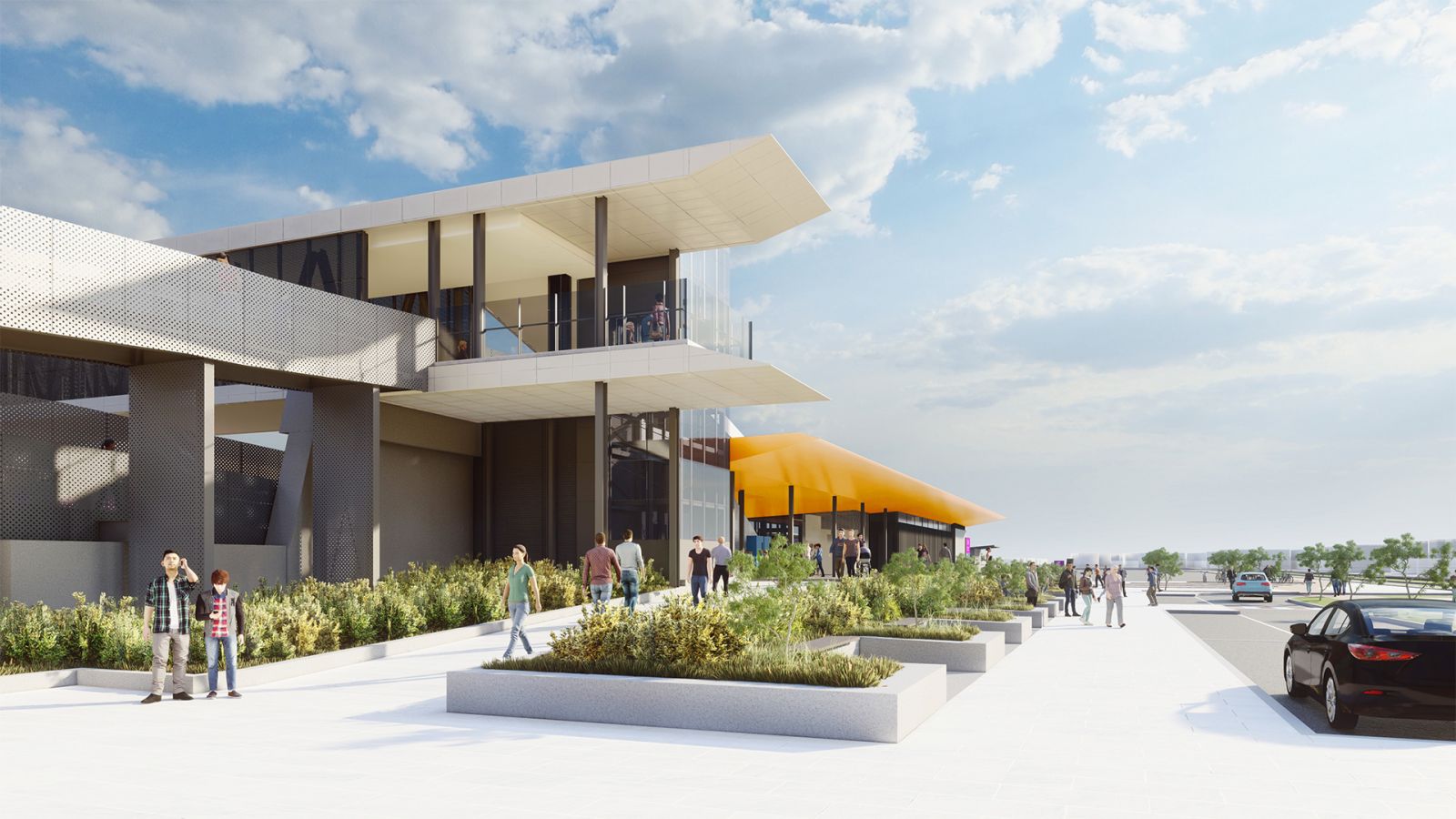In 1957, my parents paid a few hundred pounds for a block of uncleared land on the southernmost edge of suburban Melbourne, on which they built a home. This rectangle of scrub on a corner of two unmade roads was about 2.5 kilometres north of Frankston railway station.
The two-bedroom timber house wasn’t much, but it’s still there, recently renovated. The backyard where I successively through the years played with the dog, kicked a footy and sneakily drank beer with my adolescent mates has been sold off and now hosts an impressive double-storey home.

Today, the area is the full outer suburban scene: paved to within an inch of its life, a mix of post-war homes, small blocks of flats, and a primary school. It’s mostly car dependent – especially if you want to do any shopping – with easy access to a main highway in one direction and a freeway in the other. There’s also a nearby railway station.
But its low-key character looks likely to change. The state government has big plans for this humble street of my early years, with its weekend sounds of lawnmowers and cricket or football or the races on the radio.
In the draft maps of the 10 activity centres in established suburbs issued last week, the street is in the Frankston “catchment area”, which means it could host developments of three-to-six storeys.
The government’s goal is to increase density by adding 60,000 housing units in the activity centres of Broadmeadows, Camberwell Junction, Chadstone, Epping, Frankston, Moorabbin, Niddrie, North Essendon, Preston and Ringwood by the middle of the century. In the activity centres, maximum building heights would be as high as 10 or 12 storeys depending on the location.
Instinctively, it’s a shock to consider that sort of transformation. In most cases, medium-and-high-rise residential developments have been restricted to the CBD and former industrial and commercial land. Elsewhere, the usual practice has been to go out rather than up.
The use-by date for that approach is approaching fast. After more than 20 years of exceptional growth, Melbourne is already groaning under the weight of its suburban sprawl. Yes, new land on the suburban fringes will continue to be released and developed for housing, but to keep creating new suburbs at the rate we’re used to will impose enormous social and financial costs.
The city is coming up hard against the downside of the good times that followed the end of the 1990s recession and its regular attainment of the World’s Most Liveable City designation. After the dog days of the early 1990s, Melbourne was reborn and became a population magnet.
It won’t be long before Melbourne overtakes Sydney and regains its status as the nation’s biggest metropolis. At the time of Federation in 1901, Melbourne was the new nation’s biggest city, with 493,956 inhabitants. Sydney was only a little behind, with 488,968 people calling it home. It would soon overtake Melbourne as the most populous metropolitan area.
In 2001, Melbourne’s population was 3.3 million. Last year, it was 5.2 million and Sydney’s was 5.4 million. Melbourne’s population growth rate was 3.3 per cent, while Sydney’s was 2.8 per cent. Whoopee, Melbourne might already have its nose in front.
In all likelihood, that “win” will deliver a burden rather than a prize. As our full-blown housing crisis demonstrates, one area of policy where we really stumble is reaching a consensus on how to make our cities work better. That two out of three of us live in the eight state and territory capitals makes this even more striking; surely planning and infrastructure rivals health, education and community safety when it comes to the most important basic functions of government.
The Victorian Government has been promising a hospital in the Melton area for years and this has not been delivered.
The Allan government should get a tick for having a crack at promoting housing density and the need to give more Melburnians better access to existing commercial centres and public transport. The proposals are now out for consultation and the government’s intention is to decide on planning amendments by December.
Melbourne has endured a shocking run of very poor planning decisions that have favoured developers for years. New suburbs without services and land released in droves without a railway station in sight.
A great example of how the transport planning in melbourne has failed the outer suburbs is in the Cranbourne area a series of suburbs without access to train travel with a rusting rail line through the suburbs with no trains delivered. A train service has been promised here for years, but instead the government delivering a train service it has been lifting the line and making it available for a seldom used rail trail.
But maps and plans and consultation periods can only take things so far. They’re valuable and essential, for sure. However, what we never get in a sustained way is a persuasive explanation for why we need to reimagine our city and our suburbs.
Another great example of delayed and poor planning was the very expensive and overbuilt rail line to Mernda. By the time the rail extension had been delivered the suburbs to the north of the rail terminus were already 10kms distant. The Mernda Railway Line needs an important extension to the north linking back up to Whittlesea.
Only the government can lead us to confront and understand the double challenge posed by Melbourne’s growth. There is the hard, practical reality of having to pay for the infrastructure – the roads, the schools, the transport options, the health services – that the public must provide in greenfields suburbs. And there is the requirement to imagine a metropolitan Melbourne that, in many places, will look nothing like it does now. Instead, we get an announcement, fleeting press conference, deflection, announcement, and not much of it makes sense to most of us.
Housing in Melbourne’s north has been developing more towards the west and the north of Mernda making Wollert a key location for a rail line extension to service over 100,000 people already building and moving into their homes. Wallan is also a growing area with any rail line extension proposed should connect with the rail line from Craigieburn to Wallan at Wallan. This would if completed allow passengers to directly access the north eastern suburbs of Melbourne rather than commuting into the city and then needing to catch services out to the north east.
On current trends, within 30 years Melbourne will have to house 8 million people. Every Victorian should know that number now, when we need to start planning for it.
If the government could break its habit of seeing its key responsibility as making promises and announcements and focus more on explaining – of providing the “why” – it might find itself travelling a little better. And our children and grandchildren years from now would be better off too.
Shaun Carney is a regular columnist, an author and former associate editor.
The Age and Vibewire



